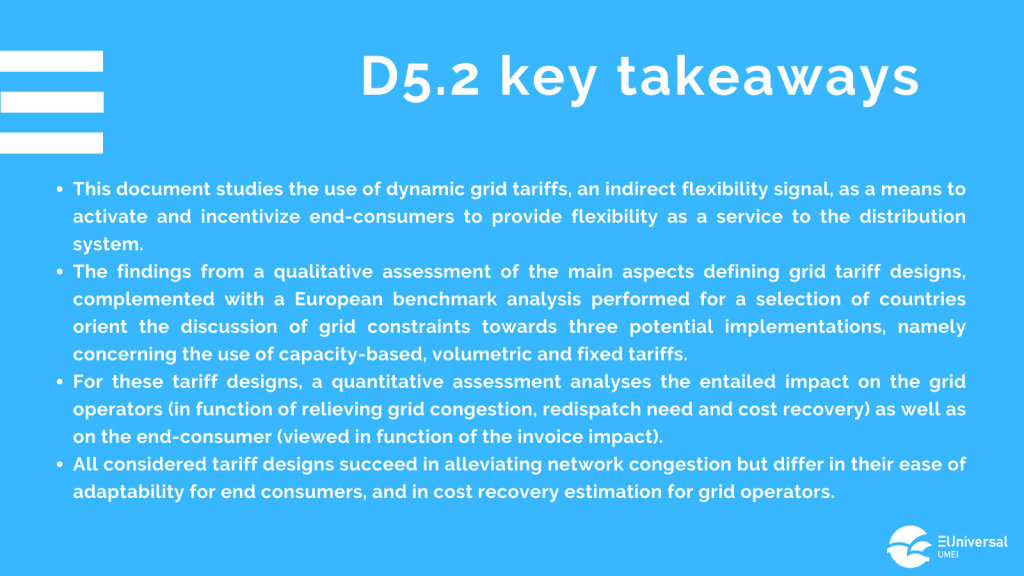The EUniversal project, funded by the European Union, aims to develop a universal approach on the use of flexibility by Distribution System Operators (DSO) and their interaction with the new flexibility markets, enabled through the development of the concept of the Universal Market Enabling Interface (UMEI) – a unique approach to foster interoperability across Europe.
The anticipated project outputs are becoming increasingly important since in recent years the energy landscape has experienced substantial changes. Digitization, decentralization, decarbonization, deregulation and democratization (often referred to as the 5Ds) leave their mark on the energy transition.
Consequently, flexibility in distribution grids is becoming a key aspect in a renewable-dominated electricity smart system. EUniversal aims to provide the necessary tools to identify, quantify and provide flexibility services directly to the distribution grid.
To ensure the development and the stable operation of distribution grids, DSOs can use a toolbox of mechanisms, including market-based, tariff based and rule-based solutions.
In deliverable D5.2 of the EUniversal project, we focused on the design of more dynamic distribution network tariffs to mitigate both short-term and long-term congestions.
The current grid tariff structures were laid out in a time when the energy provision was still rather unilateral and renewable energy and self-production were not yet broadly applied. Furthermore, consumers were assumed to be rather unresponsive to more dynamic grid tariffs or other price signals. As this passive consumer role is evolving towards more active participation, consumers can provide significant flexibility potential from an electricity system point of view. In this context, the review of grid tariff design will be reconsidered in this report and specific attention is given to the application to the EUniversal German demo.
A qualitative assessment of the main aspects defining grid tariff designs, complemented with a European benchmark analysis performed for a selection of countries forms the basis for acquiring first insights.
The further analysis, based upon the different design dimensions considered (i.e. distribution of grid costs, spatial variability, consumer variability, time variability, tariff driver, symmetry, dynamic element, billing trigger and granularity), has resulted in 5 tariff designs for this assessment;
1. Static grid tariff
capacity-based tariff where the congestion risk is identified ex-ante based on historical data analysis. Based on a combined seasonal and time-of-day analysis of the cumulative load profiles within the grid, five different tariff periods have been defined and used as temporal (time of day and seasonal) differentiation elements in the design of this static grid tariff.
2. Event-based binary grid tariff
capacity-based tariff where the congestion risk is determined day-ahead. One tariff is applied for the entire day with a distinction between a low and high tariff depending on the anticipated grid state.
3. Event-based gradual grid tariff
capacity-based tariff where the congestion risk is determined day-ahead. One tariff is applied for the entire day with a distinction according to 5 rate heights depending on the anticipated grid state.
4. Dynamic binary grid tariff
volumetric tariff where the congestion risk is determined day-ahead. An hourly differentiation is applied with a distinction between a low and high tariff depending on the anticipated grid state.
5. Dynamic gradual grid tariff
volumetric tariff where the congestion risk is determined day-ahead. An hourly differentiation is applied with a distinction according to 5 rate heights depending on the anticipated grid state.
For these tariff designs, a quantitative assessment is made of the entailed impact on the grid operators (in function of relieving grid congestion, redispatch need and cost recovery) as well as on the end-consumer (viewed in function of the invoice impact).

This deliverable was jointly produced by VITO and KU LEUVEN








